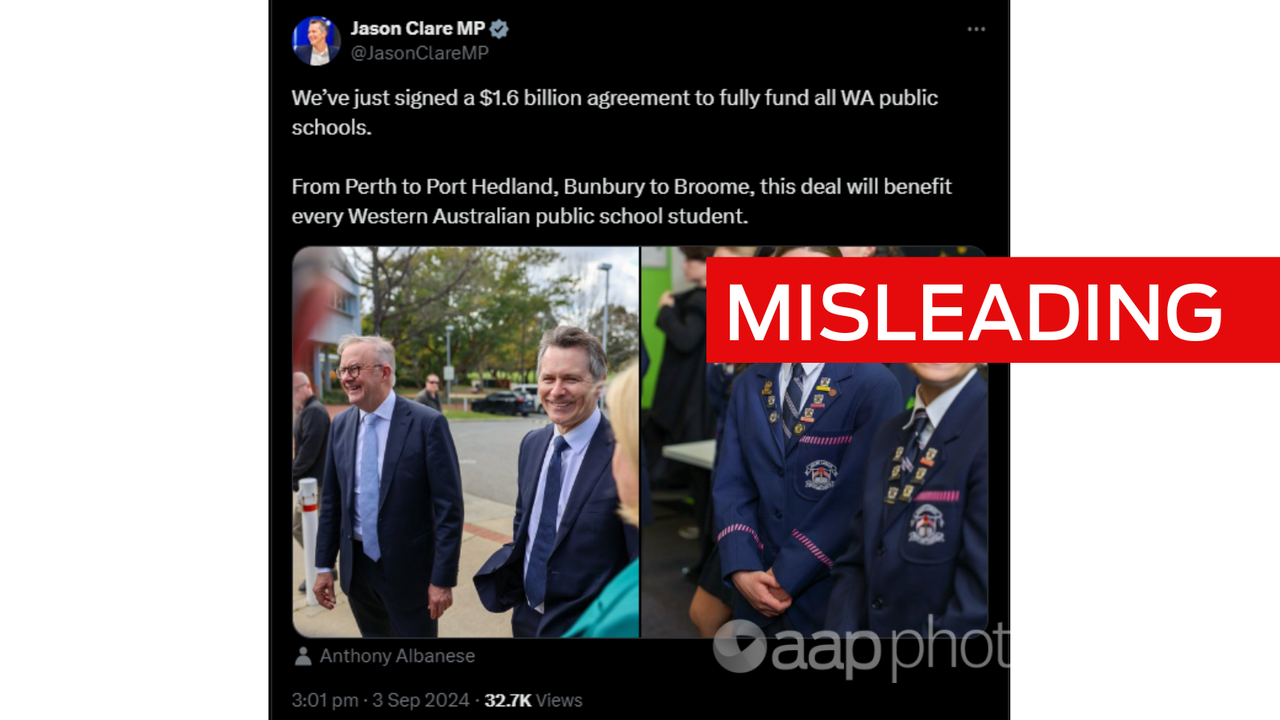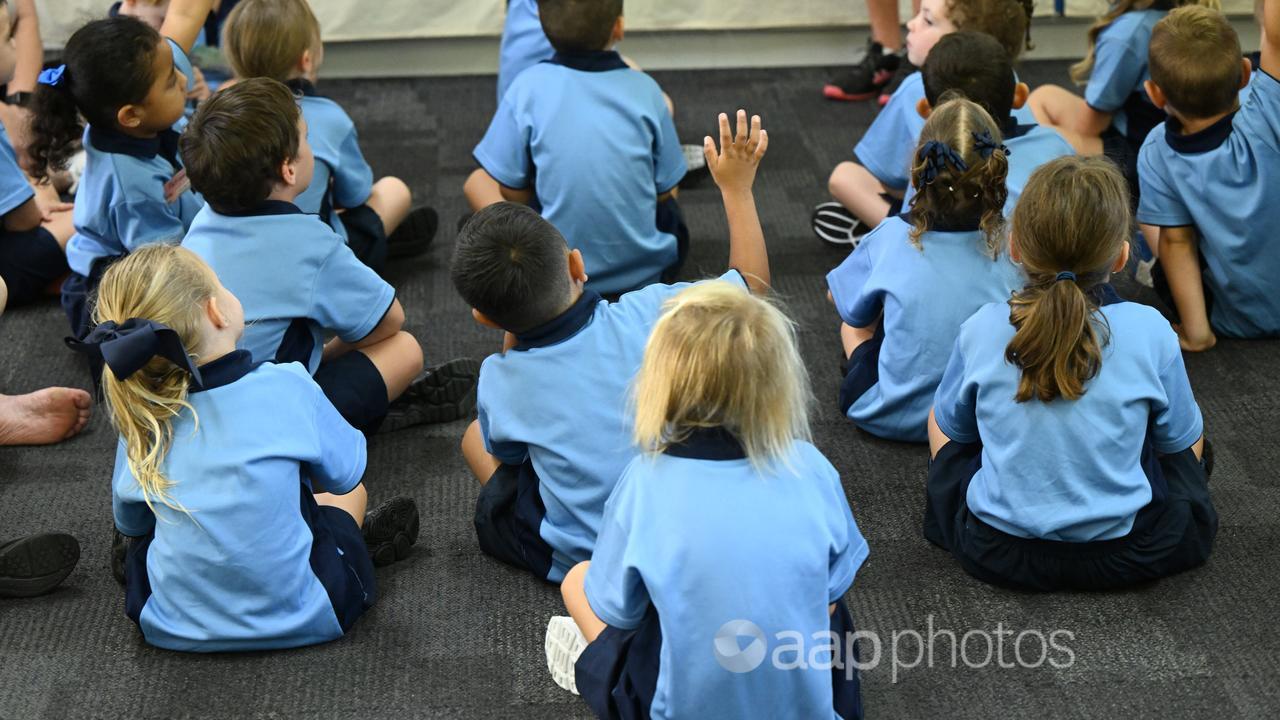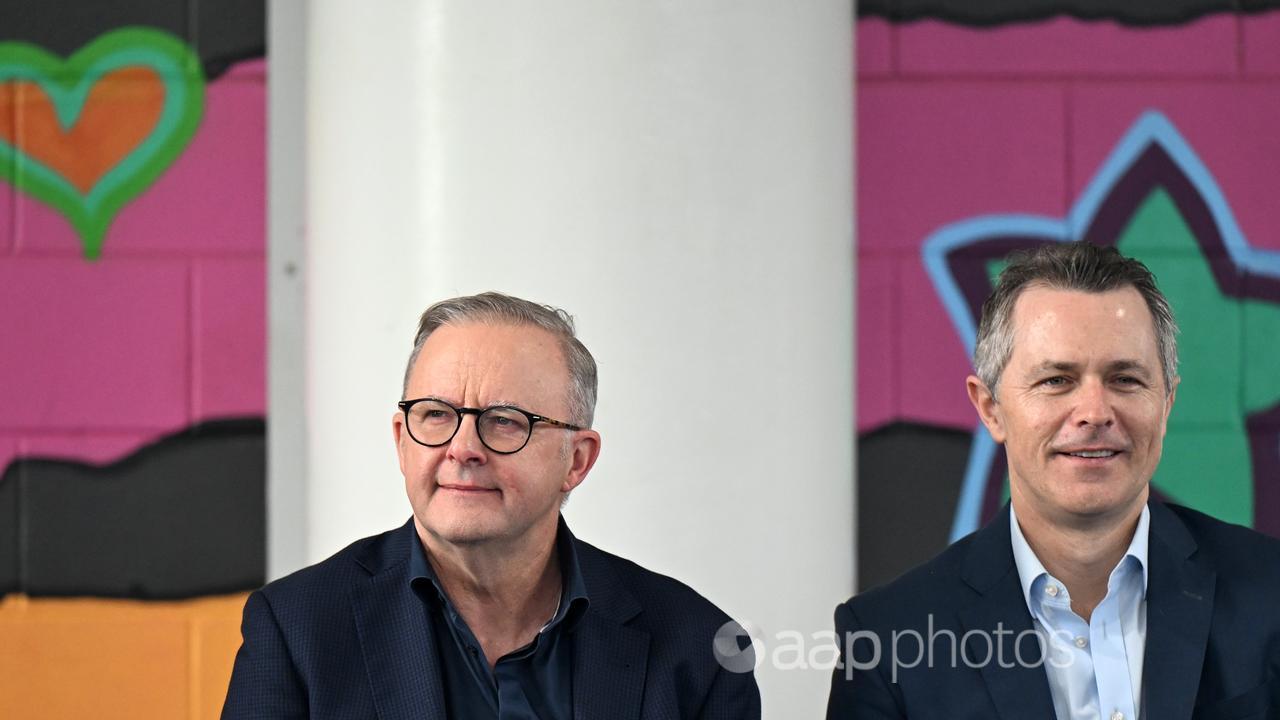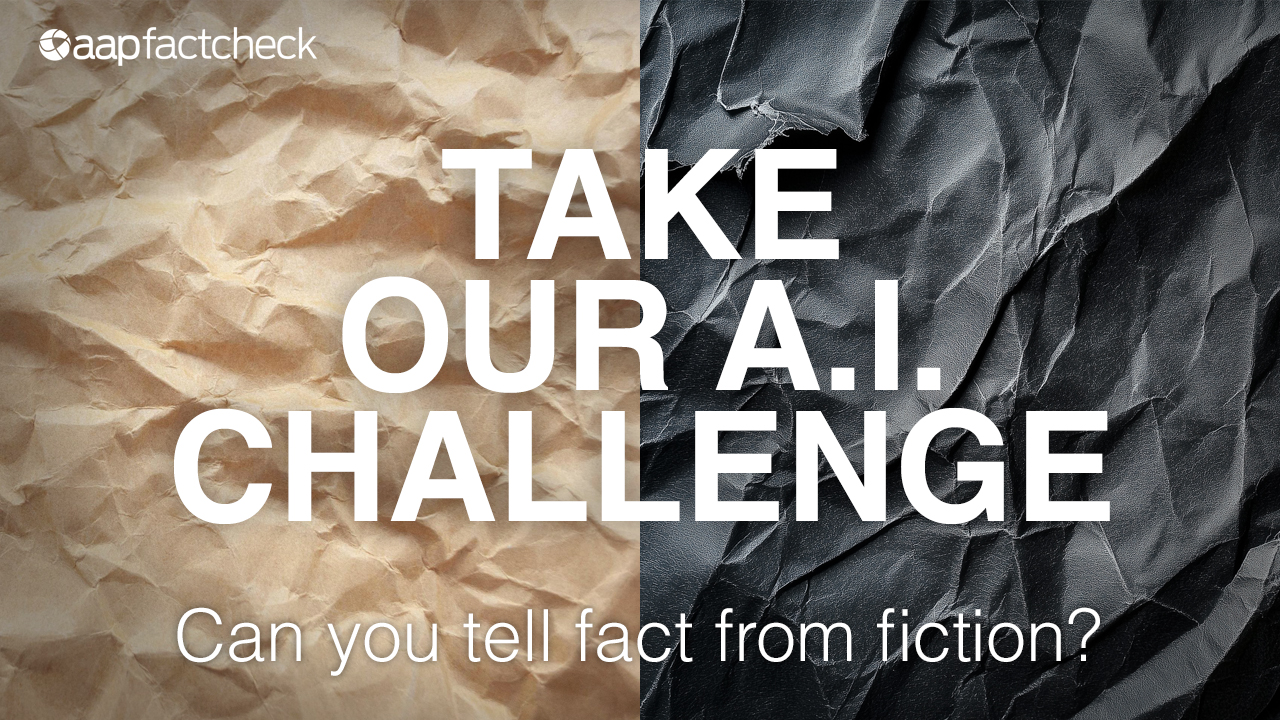AAP FACTCHECK – Federal education minister Jason Clare claims a new agreement signed with the Western Australian government will “fully fund” public schools in the state, to the level recommended in the landmark Gonski Review.
This is misleading. The federal government has not removed a “loophole” which may leave schools four per cent short of the Gonski level.
In a September 3 press conference, Mr Clare stated that the new deal means: “Western Australia will be the first state in the country to get public schools to that full funding level, that level that David Gonski said all those years ago.”
The fully funded claim refers to the School Resource Standard (SRS), a calculation used by federal and state governments to estimate funding needs in schools based on the recommendations made in the 2011 Gonski Review.

The loophole allows states and territories to allocate up to four per cent of their SRS funding on costs such as capital depreciation, school transport and kindergarten.
AAP FactCheck previously addressed the details of the loophole in February 2024.
The new agreement does bring WA public schools closer to the Gonski level, with the state government and federal government increasing their respective funding from 20 per cent and 75 per cent of the SRS level to 22.5 per cent and 77.5 per cent.
However, Section 49a of the new agreement (page 8) confirms that the loophole remains.

Critics argue this is not an insignificant amount. The Australian Education Union says the loophole will leave WA public schools underfunded by $1.32 billion over the next five years.
Nine Newspapers reported in January that in 2023 this provision meant all states and territories, bar the ACT, collectively claimed they spent $2 billion which never reached classrooms.
AAP FactCheck asked Mr Clare for evidence to support his claim that the agreement meant schools would be fully funded to the Gonski level.
His office did not directly answer and instead pointed to answers given by both Mr Clare and his WA counterpart Tony Buti at the September 3 press conference.
Responding to a question about the four per cent provision, Mr Clare said: “This enables the full funding of public schools here in WA based on the Gonski model.”
Mr Buti said that the four per cent is used for education and transportation, and that only a “minute portion” is for depreciation.
Gonski’s final report shows these costs were not recommended to be included in the SRS.
Finding 12, on page xxx, of the report states: “For the purposes of developing future recurrent funding arrangements, it would be appropriate to continue to exclude the user cost of capital, depreciation, capital expenditure and payroll tax.”

The report also recommends, on page 161, that “adjunct service costs” including student transport costs should be “dealt with outside the resource standard and estimated as a separate resourcing requirement on funding bodies”.
Dr Matthew Sinclair, an educational policy researcher at Curtin University, said the Gonski report warned that “the inclusion of capital depreciation and transport costs could lead to cost shifting and suggested they should be dealt with outside of the SRS calculations”.
He said that while it will ultimately be up to the WA government to decide if it will take advantage of the loophole, under the deal WA public schools will in all likelihood only receive 96 per cent of the SRS funding in practice.
Professor Stephen Lamb, an emeritus professor at the Centre for International Research on Education Systems (CIRES), said the costs covered by the four per cent may well “in a woolly way” be treated as part of total school costs.
However, he agreed the Gonski model does not take them into account.
“If the items making up the 4% are retained in the new agreements then the SRS will not fully fund government schools based on the Gonski model,” Prof Lamb stated.
The Verdict
Misleading – The claim is accurate in parts but information has also been presented incorrectly, out of context or omitted.
AAP FactCheck is an accredited member of the International Fact-Checking Network. To keep up with our latest fact checks, follow us on Facebook, Twitter and Instagram.
All information, text and images included on the AAP Websites is for personal use only and may not be re-written, copied, re-sold or re-distributed, framed, linked, shared onto social media or otherwise used whether for compensation of any kind or not, unless you have the prior written permission of AAP. For more information, please refer to our standard terms and conditions.


















